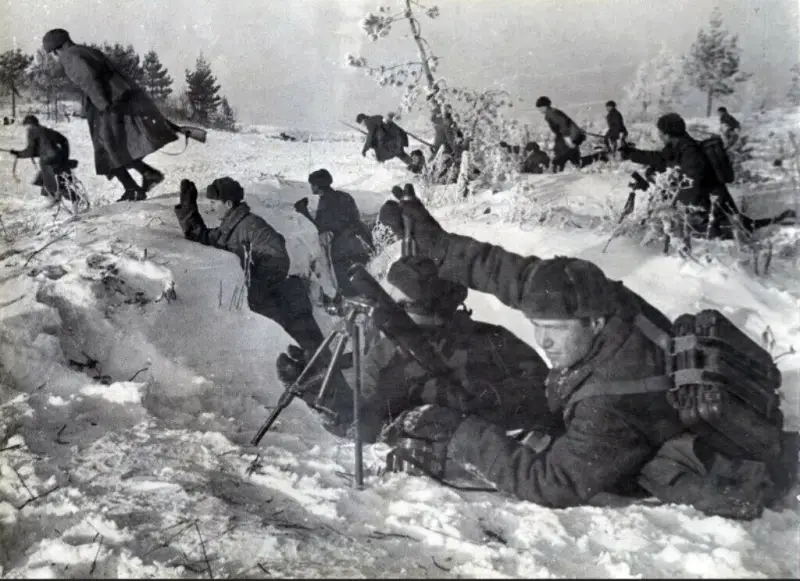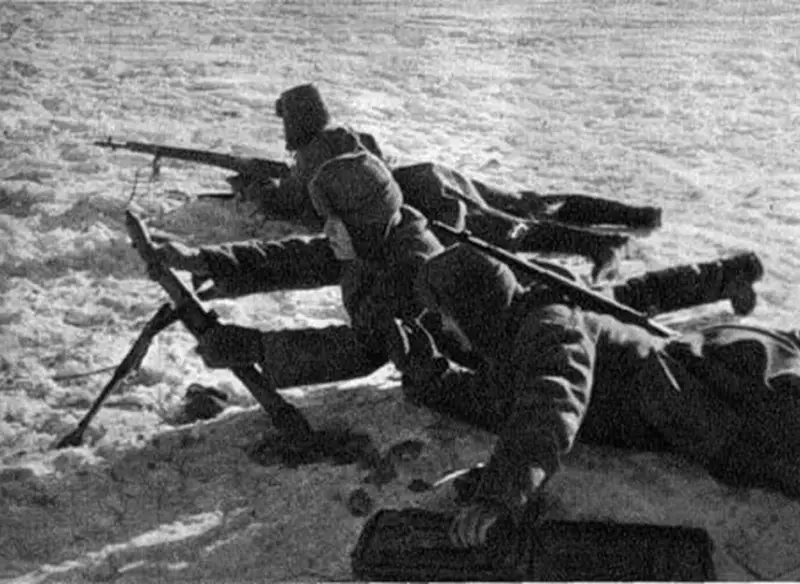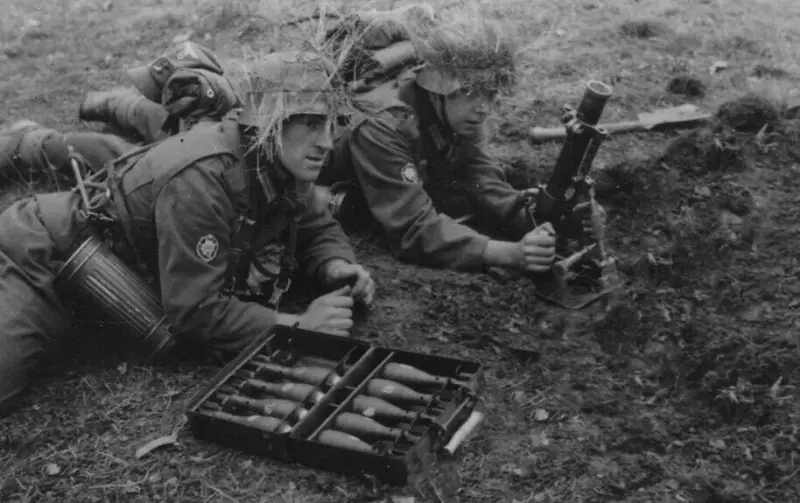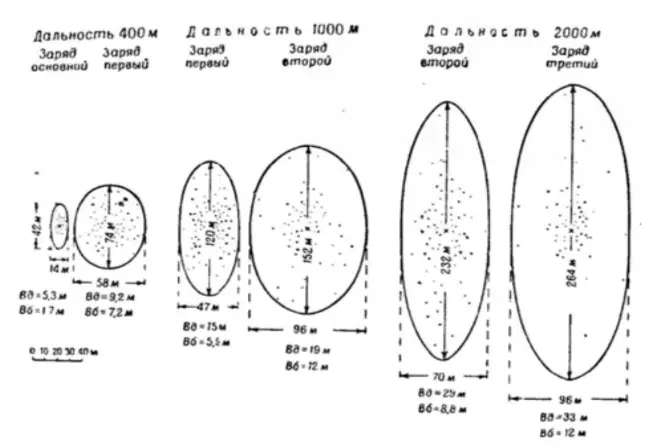The saga of the company mortar in the Red Army. Application practice, experience

Start reading: “The saga of the company mortar in the Red Army. Adoption».
Part 2
In his article "He is in the position of a homeless child..." dated July 24, 2019, Andrey Ulanov reviewed extracts from archival documents on “assessing the role of 50-mm company mortars” based on the experience of the Great Patriotic War.
During the Great Patriotic War, both officers of the General Staff of the Red Army and “core” departments - GAU, GABTU, and so on - collected information about the use of weapons in battle. Without waiting for the last shots to subside in defeated Berlin in 1945, the departments for studying the experience of the war began their work.
1. Should the RM-50 be in service with a rifle platoon or rifle company: how many mortars should there be in one case or another?
2. How many people should a mortar crew consist of?
3. What changes should be made to the tactical and technical requirements of the existing latest model of a company mortar?..
In addition to answering each question posed, it is necessary to give a well-founded motivation for the proposed option, citing typical combat examples.
Chairman of the Rifle Tactical Committee of the Red Army, Lieutenant General Smirnov, Colonel Goncharov. April 28, 1945."
The majority of respondents, as they say now, limited themselves to answering only the first point - for the simple reason that their opinion about 50-mm company mortars was unambiguous.”
Let us quote the most typical statements from the original source article.
Firstly, the 50-mm mortar, having low fire efficiency, short firing distance and poor shooting accuracy, is not suitable for its purpose.
Secondly, the 50-mm mortar, due to its short firing distance, is always located in infantry combat formations and therefore the delivery of ammunition during battle is very difficult and often impossible.”

The crew of the RM-38(40) mortar is ready to open fire
a) in defense it maintains its stability as a fire unit. Effectively used as a roaming mortar directly on the front line;
b) during the offensive, it does not provide any effective fire, both during artillery preparation and during close combat.
From the moment of launching an attack, as a rule, up to 90% of the crews are out of action and do not take part in the offensive battle. As a rule, no one controls the mortar fire, and it remains on its own on the battlefield, as a result of which [there are] unjustified losses of personnel.
The general attitude of company and platoon commanders towards the mortar is extremely negative, and therefore he is in the position of a homeless child.
Conclusion: the 50-mm mortar must be removed from service as it did not justify itself in the Patriotic War."
The most effective use of company mortars was found in defense, when the opposing sides were no more than 400 meters away from each other. In defense, when conditions allow concentrating a stock of 50-mm mines for strong and effective fire, it is useful for each rifle company to have at least six barrels of 50-mm mortars to prevent trench work, destruction and suppression of enemy firing points.
Company mortar crew - at least three people"
Soldiers and commanders armed with RM-50 sometimes did not use them and resorted to other types in battle. weapons. The mortar has significant weight, requires a large consumption of mines, and requires a minimum of four operating personnel. Completely unsuitable for the destruction of more or less significant structures. The RM-50 mortar, as it has not justified itself in battles, should be removed from service.”

Crew of a German company mortar in position
1. For close combat, both during offensive and defensive combat, you can use a 50-mm company mortar armed with a rifle platoon. I consider it more convenient to have two company mortars in a rifle company, so that the platoon can have a mortar squad - two mortars and two or three riflemen.
2. The mortar crew must consist of three people. Commander-gunner and two mine carriers.
3. Changes to the tactical and technical requirements should be made: increase the firing range to 1 meters, to destroy manpower in the second and third lines of enemy trenches.”
An attempt to objectively comprehend the negative results of the use of 50-mm mortars during the Great Patriotic War. Hit accuracy
The accuracy of mortars is limited by design; they are not just smooth-bore, but also have an air gap between the mine and the barrel. When fired, the mine experiences beating against the barrel; its alignment when moving up the barrel is not fully ensured by the centering thickening with grooves due to the powder gases overtaking the mine along its perimeter.
The relatively low accuracy of the mortar was somewhat compensated by the power of the 50-mm mine, since it had twice or three times the weight of cast iron and explosives than a hand grenade or a grenade for the Dyakonov grenade launcher.
With the aim unchanged, when fired, the mines do not hit one point, they are scattered over an area, the boundaries of this area form a longitudinal ellipse. Its center is the true aiming point of the mortar.
Let's take data from the book “Manual on Shooting (NSD-40). Company mortar model 1938, 1940 (50 RM)" (p. 78): range deviations Vd at maximum range (800 m) = 16 m; lateral deviations wb = 8 m. There are no data for other distances.
Let's calculate the accuracy of a 50-mm mortar, according to the book by Nikiforov N.N. “Mortars” (pp. 199–201):
50% of the best hits at a distance of 800 m, deviation from the center of the ellipse along the length 2*Vd = 32 m;
50% of the best hits at a range of 800 m lateral deviation from the center of the ellipse 2*wb = 16 m;
100% hits at a range of 800 m, deviation from the center along the length 8*Vd = 128 m;
100% hits at a range of 800 m lateral deviation from the center 8*wb = 64 m.
Vd/Wb – width of the best lateral/length deviation bands. 2* wide stripVd(Wb) account for 50% of hits closest to the point of aim/aiming. These values are obtained by practical measurements of deviations of mine impact sites from the point of aiming/aiming at the training ground, and their further mathematical processing.
Thus, at a distance of 800 m, a mine can fall at any point in a longitudinal ellipse with an area of ≈ 25 m2.
Area of the ellipse of best hits ≈ 1 m2.
The area affected by fragments of a 50-mm mine is a circular zone with an area of ≈ 300 m2.
The radius of destruction of fragments is ≈ 9,7 m.
If anyone is interested, start reading from page 194 of N.N. Nikiforov’s book “Mortars”.
Conclusions
1 output: Firing from a mortar (RM-38 and 40) at a distance of 800 m can hardly be called effective/targeted, rather “in that direction” or, in military terms, “firing in areas.”
Let's evaluate accuracy of a 50-mm mortar at a range of 400 and 500 m (the recommended range for using 50-mm mortars up to 500 m is specified in paragraph 402 of BUP-42).
We know from the Manual for a 50-mm mortar the figures for a distance of 800 m. The calculation will be estimated using the similarity method, since the movement of 50 mm and 82 mm mines occurs along similar trajectories, and the flight speeds are of the same order. The basis is taken from data on an 82-mm mortar at distances of 400 and 1 m, shown in the figure below.

How the dispersion area of mines increases with changes in the firing range and charge of an 82-mm mortar.
Source: Figure 134 on page 198 from the book “Mortars” by N. N. Nikiforov. – 3rd ed., revised. – Moscow: Voenizdat, 1956. – 248 p.
Data for 82 mm mortar with main charge:
- Vd 400 m = 5,3 m; Vd 1 m = 000 m, K conversion = 15/5,3 = 15;
- wb 400 m = 1,7 m; wb 1 m = 000 m, K conversion = 5,9/1,7 = 5,9.
Then estimated for 50 mm mortar at a distance of 400 m accuracy:
– 50% hits at a distance of 400 m, deviation from the center along the length 2*Vd ≈ 11 m;
– 50% hits at a distance of 400 m lateral deviation 2*wb ≈ 5 m;
– 100% hits at a distance of 400 m, deviation from the center along the length 8*Vd ≈ 45 m;
– 100% hits at a distance of 400 m lateral deviation 8*wb ≈ 19 m;
– area of the ellipse of the best hits ≈ 173 m2;
– ellipse area of 100% hits ≈ 2 m2.
As can be seen from the estimated calculations, for a 50-mm mine with a damage radius of ≈ 9,7 m (damage area ≈ 300 m2), the effective range of 400 m, indicated by the front-line soldiers, is mathematically justified. The area of the best half of hits (50% of hits close to the center of the aiming/aiming point) at a distance of 400 m is ≈ 173 m2 (almost 2 times less than the area affected by the mine) and about 9 times less than the same area at a distance of 800 m (≈ 1 m2). In about half the cases (actually a little less), with precise aiming, the target will be hit by shrapnel from the first/second shot. In the worst case, no more than 10 minutes (it must be taken into account that the norm when aiming a mortar at a target is considered to be 6–7 minutes).
On the distance 500 m The accuracy for a 50mm mortar is estimated to be (we use the proportions method for lack of a better one):
• 50% hits at a range of 500 m, deviation from the center along the length 2*Vd ≈ 13,7 m;
• 50% hits at a distance of 500 m lateral deviation 2*wb ≈ 6,2 m;
• 100% hits at a range of 500 m, deviation from the center along the length 8*Vd ≈ 56 m;
• 100% hits at a distance of 500 m lateral deviation 8*wb ≈ 24 m;
• area of the ellipse of the best hits ≈ 259 m2;
• ellipse area 100% hits ≈ 4 m2.
At a distance of 500 m, the effectiveness of the 50 mm mortar deteriorates, the area of the ellipse of the best hits (≈ 259 m2) is already comparable to the area affected by the mine. It is estimated that it takes at least 3 minutes to hit a target with precise targeting. In the worst case, at least 14 minutes.
2 output: effective range of mortar use (RM-38 and 40) ≈ up to 400 m.
In BUP-42, paragraph 402, the recommended effective firing range of a 50-mm mortar at enemy firing points and manpower is indicated up to 500 m, which is consistent with our assessment calculations: at a distance of more than 400 m, the accuracy of the mortar drops significantly, which reduces its combat effectiveness .
Продолжение следует ...
Information